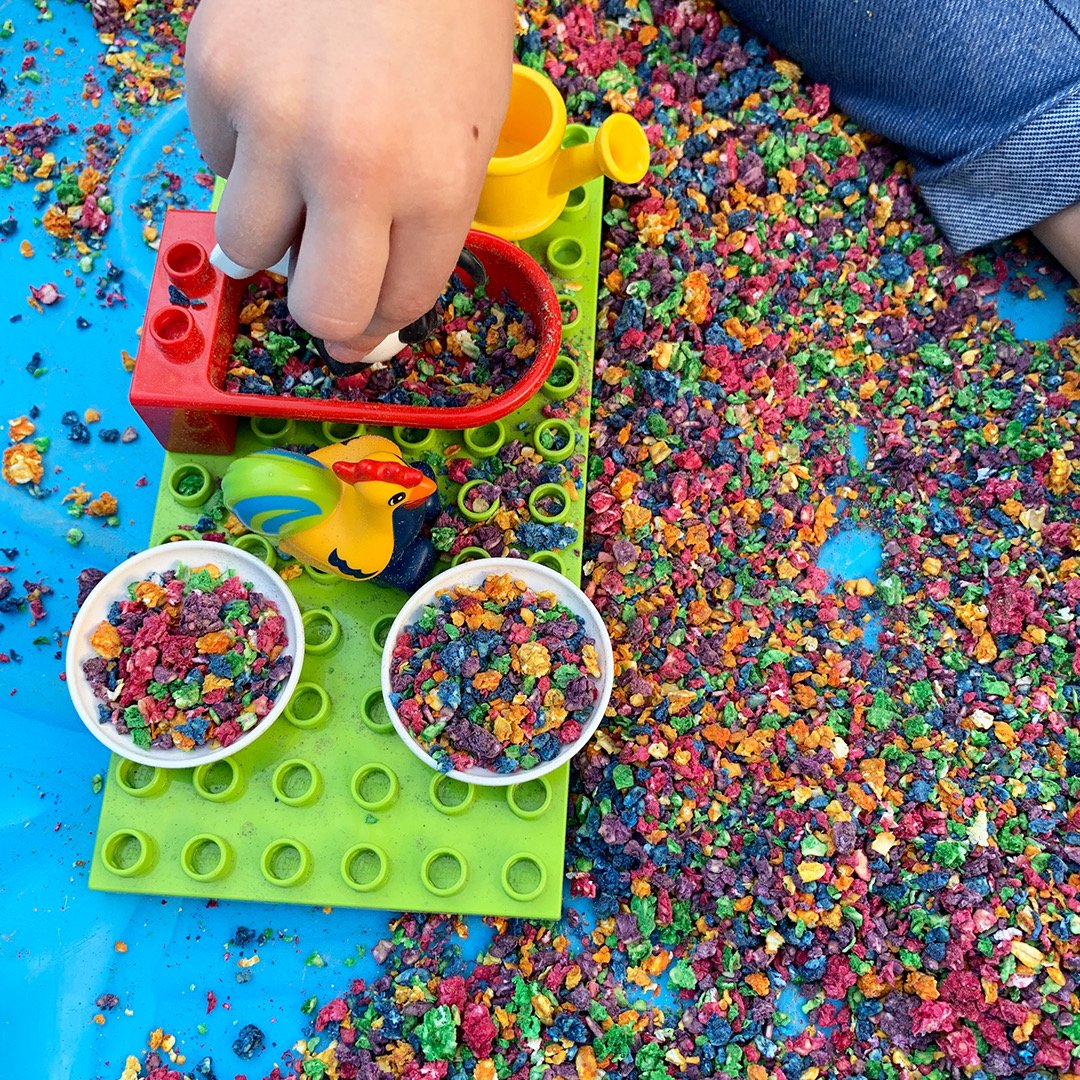YAY OR NAY FOR MESSY PLAY
Does my child truly enjoy messy play and if not, then what to do to encourage engagement?
Yes engaging is messy play is beneficial for every child’s development….but not all children love it. Or some children appear to love it, but if you observe their behaviours when engaging in it, they display some defensive reactions.
First of all, what is messy play?
Messy play is a sensory based activity that a child engages in, that stimulates most senses, especially their tactile system. It involves the full exploration of different materials in an open-ended manner.
Such messy play activities can be:
dry tactile mediums including sand, rice, beans, dried cereal, playdough etc; or
wet tactile mediums including bubbles, finger paint, shaving foam, jelly, slime etc.
Messy play activities can include food or non-food-based mediums.
Is my child enjoying the messy play experience or not?
Here are a few signs that show us that your child is finding the messy play experience hard:
Not wanting to touch the tactile medium with their fingers or only touching it with the tips of their fingers
Frequent wiping or washing hands
Finger splaying (outstretching all their fingers)
Leaning away from the messy play
Grimacing, salivating or looking away
Completely avoiding the messy play by running away or stepping back
Verbalising their dislike for the messy play activity (for example saying “yuck”…)
What do I do if my child is showing one of these above responses?
The main thing that we don’t do is force their hands into the messy play activity. Engagement needs to come from the child and of their own will. But how do we do this?
Provide them with a tool. Give them a spoon, an animal or any other figurine that they love, a cup or any other object that would allow one to interact with the messy play activity. By providing your child with a tool, we allowing them to engage in the messy play activity but without having to touch it. Very often we find that allowing a child to engage in the messy play activity with a tool, they provided with the opportunity to figure out the messy play experience and then will eventually touch it on their own terms.
Keep the experience as playful and relaxed as possible.
As the adult, engage in the messy play activity the way you would like your child to engage with it. But in a non-forceful manner. Sometimes a child needs to watch and observe first.
When engaging in the messy play activity, try keep your language as positive and non-forceful as possible. Avoid saying “do this” or “do that”. Instead, describe the properties of the messy play medium and what you are doing.
Have a bowl of water and a cloth nearby. This will allow them to wash or wipe their hands whenever necessary.
Why is engaging in messy play activities important?
Messy play promotes curiosity and experimentation, through the sensory experience that it elicits.
Messy play stimulates language development – it can lead to amazing discussions regarding the various properties of the tactile mediums. For example, soft, squishy, cold etc. It can also engage the childs imagination and pretend play. For example, creating a bridge or road out of playdough.
Messy play activities largely stimulate the tactile system, specifically on the hands. The tactile system is a very important system that provides us with information about the various properties of objects (for example, the temperature, soft or hard, rough or smooth….). It then forms a base to which we are then able to adequately manipulate various objects like scissors or pencils. By engaging in various messy play activities, we therefore develop these skills, which form important foundations to developing more higher order skills like one’s fine motor, gross motor and visual perceptual skills.
So now we know more about messy play and what it involves, lets embrace the messy-ness and get to a point where your child enjoys messy play to fully reap the benefits.

